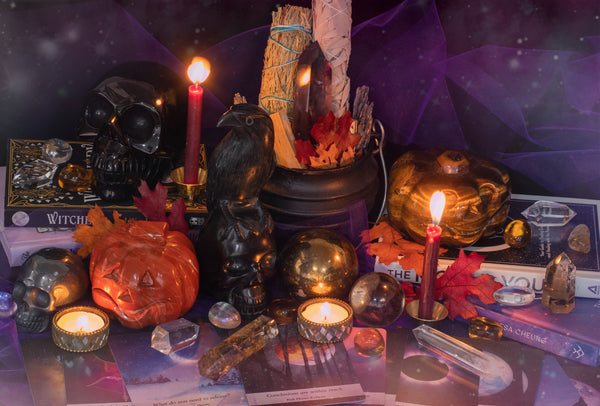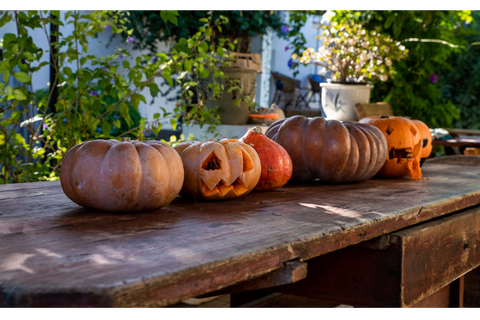
The Powerful Blue Moon & History of Halloween
The history of Halloween is expansive and has evolved through different cultures across many centuries. Celebrated on October 31st, Halloween 2020 is particularly unusual in that it falls on a full moon for the first time in 76 years. This rare Halloween Blue moon follows the Harvest moon on October 1st. (For the un-initiated, a Blue moon happens when two moons occur within the same month).
The Blue moon symbolizes growth of knowledge and wisdom. We see our full moon in Taurus, ruled by Venus, the planet of love, beauty and money. However, it is alongside Uranus, the planet of chaos and reinvention. Get ready for deep transformations within the collective conscious! Take this time to evaluate what is serving your highest purpose and what you are ready to let go of -- creating space for change and growth this weekend will ease the transition.

Folks enjoy dressing up and getting spooked for Halloween, but where did this holiday get its creepy roots? Traditions began at the ancient Celtic festival of Samhain, when folks would dress up in costume to scare away ghosts. Still celebrated in modern Pagan practices, Samhain marks the end of summer and the harvest, and a time to usher in the dark and cold half of the year.
In the eighteenth century, November 1st came to be known as All Saints Day and the night before, All Hallows Eve. But all of this begs the question: How did pumpkins got involved?
Decorating Jack-o’-lanterns originated in Ireland. They used turnips and large potatoes as canvases for ghoulish faces, illuminated by candles to scare away evil spirits. In the late nineteenth century many Irish immigrants fled the Irish Potato Famine by moving to the United States -- bringing this spooky illumination of the Halloween we know today . Today we continue this tradition with pumpkins; they are linked to rebirth and fertility, and they symbolize the harvest.

In Mexico they celebrate Día de los Muertos or Day of the Dead, October 31 – November 2. Halloween is observed on October 31, All Saints Day on November 1, and then Day of the Dead on November 2 (It's a true 3-day marathon event!). According to these traditions this is the time of year when the veil between our physical world and the spirit world is the thinnest. This celebration includes rituals that date back over 3,000 years with the Aztec's honoring the dead.
A favorite tradition that is still practiced today dates back to the 1700s: Sugar skulls represent the departed souls of both children and adults. The living decorate these artistic skulls with beautiful colors, glitter and adornments. Sugar skulls are placed on an altar or grave site as an offering or ofrenda to honor the dead.

Crystal skulls are also believed to come from ancient Aztec and Maya cultures.But the true origins of Crystal Skulls is an ongoing mystery and controversy that dates back thousands of years!










1 comment
Anonymous
Thank you. This was very interesting. Enjoy browsing your products when I am in Sedona.